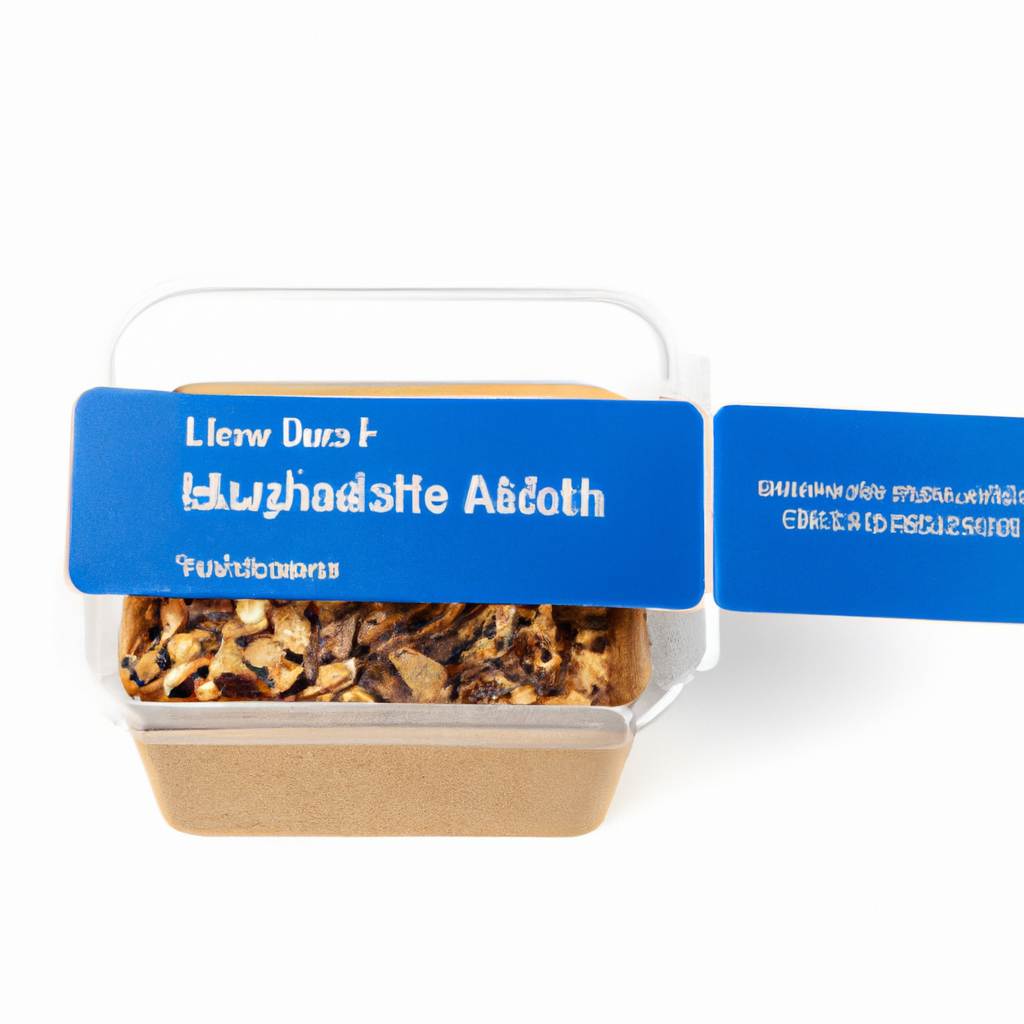With obesity rates rising in the U.S., it’s more important than ever to teach your family the fundamentals of good nutrition. Eating healthy is a lifestyle choice that must be nurtured from childhood—by teaching your family about proper nutrition you can ensure that they develop lifelong healthy eating habits. In this article we’ll look at ways to raise healthy eaters in the family, so that nutritious meals become part of your family’s lifestyle.
1. Fueling Happy & Healthy Eating Habits
When it comes to eating right, fueling happy and healthy habits is the first step. Contrary to what you may believe, eating healthy means you don’t have to deprive yourself of delicious and satisfying meals. Here are a few tips to help make eating healthy a little easier.
Plan Ahead
Think ahead and plan what meals you’d like to make the following week. This will help you save time during the week when life is busy. Look through cookbooks, websites, and social media platforms for some inspiration. Making a list of staples to keep in your kitchen that you can pull from easily when needed also helps.
Grocery Shopping
Make sure you have everything on your shopping list before you go to the store and take the time to read the ingredient labels. Choose items that are fresh and avoid processed foods and sugary drinks with empty calories. Stick to nutrient-dense foods that will provide you the necessary vitamins and minerals.
Quick Meals
When you’re pressed for time, you can still make healthy meals. Here are a few easy-to-make meals that offer nutritional value:
- Veggies and hummus with whole-grain crackers
- Peanut butter and banana sandwich
- Yogurt with fruit and nuts
- Tuna and crackers
- Salad with grilled chicken
- Pasta with pesto or marinara sauce
Snacking
Snacking is important if you’re spacing out your meals. Choose fruits and vegetables to snack on. Make sure you read the labels if you’re opting for packaged snacks – avoid any kind of added sugar. A handful of nuts and seeds, dark chocolate, and whole-grain crackers are other options.
Home-Cooked Meals
Making meals from scratch and cooking at home is another great way to eat healthier. You can select the ingredients you cook with and have full control of what goes into your food. Plus, you’ll get to save money and minimize food waste.

2. Identifying Nutritious Meal Choices
Now that you know what qualifies as nutritious meals, learning how to identify them can be a great help. When grocery shopping, you can look out for healthy whole foods like fruits, vegetables, nuts, eggs, and fish that are rich in vitamins, minerals, and other nutrients.
Focusing on buying food that are minimally processed in its natural state will also help you have healthier options. For instance, instead of chips, buy whole grain crackers, and ditch the canned soup with added flavors and colors for something homemade. The fewer additives and preservatives, the better.
Opting for convenience doesn’t have to mean unhealthy. With the right information, you can find delicious and nutritious meals at a coffee shop, cafe, or quick service restaurants. Here are some tips in identifying nutritious meals:
- Choose those that are rich in lean protein and fibre to help you feel full longer
- Get more fruits and vegetables which are a good source of vitamins, minerals, and other micronutrients
- Limit fried items and dishes that are high in trans fats, sugar, sodium, and saturated fat
Finally, to add more flavor to your meals, make sure to opt for healthier seasonings and condiments. Herbs, spices, and homemade sauces can add to the flavor without adding extra calories and additives. Always refer to labels and nutrition facts to determine the health content of packaged foods and meals.
3. Growing Appetites for Health
In recent years, interest in the correlation between food and health has skyrocketed. Consumers have become increasingly conscious of what they’re ingesting and its effects, leading to a growing appetite for healthy alternatives. Here are some of the ways that people have been proactively taking control of their health.
Healthy Grocery Shopping
Rather than purchasing pre-packaged meals full of processed grains, sugars, and fats, shoppers are now turning to the fresh produce aisle to get their health fix. Grocery stores have been adapting to the recent demand for healthier products by stocking their shelves with organic and non-GMO produce labeled short on additives and preservatives. Natural and health food stores are also being frequented more often as consumers are researching and identifying healthier options.
Smart Meal Plans
creating meal plans around particular diets and lifestyles helps people stay on track with their eating habits. Whether it be a Paleo diet, vegan diet, ketogenic diet, or just an overall healthy diet, people are researching the benefits of these diets and creating meal plans to suit their individual needs. As part of their meal plans, people are also supplementing their diets with various vitamins and minerals to ensure that they get all essential vitamins and minerals that they need.
Home-Cooked Meals
Rather than eating out frequently, many people are turning to home cooked meals for their regular meals. This allows them to have control of the ingredients and gives them the opportunity to make healthy substitutes such as swapping out deep-fried foods for baked dishes, white bread for whole wheat bread, and white rice for brown rice. Additionally, meal prepping has become increasingly popular recently as it makes dealing with hectic schedules easier and also allows people to plan out their meals for the week.
Healthy Fast-Food Options
When people don’t have the time to cook or meal prep, they are now looking to healthier fast-food options. Fast-food chains have been slowly transitioning to provide more health-conscious choices such as salads, veggie burgers, grilled chicken sandwiches, and more. Additionally, restaurants are now including nutrition information on their menu in an effort to be more transparent and provide customers with better options.
It’s clear that with the rise of technological advancements, people are taking control of their health in ways never before dreamed of. With increased access to health information and healthier menu options, people are growing their appetites for health and making proactive steps towards improving their overall wellbeing.
4. Crafting Balanced Diets for the Whole Family
Meals and snacks should provide your family with the vitamins, minerals and energy they need for healthy development and daily activities. To ensure each family member is getting the proper nutrition, try to craft balanced meals that include all the main food groups. With the following tips, you can make sure that everyone in your family is getting the nutrition their body needs.
1. Keep an Eye on Portion Size
When it comes to portion size, it’s important to realize that everyone’s needs are different. Little ones have smaller stomachs that can more easily be filled with just a few spoonfuls of food. While portions for adults should be larger, it’s also important to watch for unhealthy portion sizes. A helpful tip is to use smaller plates when serving food. This will subconsciously signal you and your family to keep portions in check, while still enjoying flavorful meals.
2. Make Healthy Options Accessible
Stocking your pantry and refrigerator with healthy snacks and meals will make it easier for everyone to make healthy choices. Make sure that nutritious items such as fresh fruits, vegetables, and lean proteins are at the front and center of your shelves. This will help to ensure that when your family is looking for a snack, they pick something healthy rather than something more indulgent. In addition, it’s a good idea to buy ingredients that are used for multiple dishes, as this will help reduce food waste and stretch food dollars.
3. Include Variety
Include a variety of foods in your meals, and encourage your family to try something they have not had before. Variety is key to ensuring you and your family are getting essential vitamins and minerals throughout the week and not just from one particular food. Mix up your protein sources with a combination of seafood, chicken, lean beef, vegetarian substitutes, nuts, and seeds. Incorporate different grains, fresh fruits and vegetables, and dairy products into meals. By mixing up the food options you offer, you’ll ensure your family is getting a variety of essential and delicious nutrients.
4. Snack Smart
Snacking is an important part of a child’s healthy diet, but it’s important to ensure they’re eating the right things. Offer snacks with whole-grain granola bars, yogurt, fruits, nuts, or whole-grain crackers. Avoid exposing them to unhealthy snacks such as processed foods or high sugar treats. Eating snacks that provide proper nutrition will ensure that their bodies stay healthy and energized between meals.
5. Make Mealtime Fun
Eating together as a family can have many long lasting benefits for everyone involved. Not only does it give everyone the opportunity to come together and connect, but it also adds an element of fun to mealtime. Spice up the conversation at dinners with meaningful topics or games. Use your imagination and dress up meals with themed decorations. Make what you’re having fun, and the family will naturally want to enjoy it.
As parents, it’s essential that we take the initiative to maintain our families’ health by following sound nutrition advice. Exploring a variety of no-fuss recipes and engaging in regular physical activities are simple steps that can be taken to make family nutrition a focus of your home. The choices we make today have the potential to help create healthy, joyful eaters that will last for generations to come.

